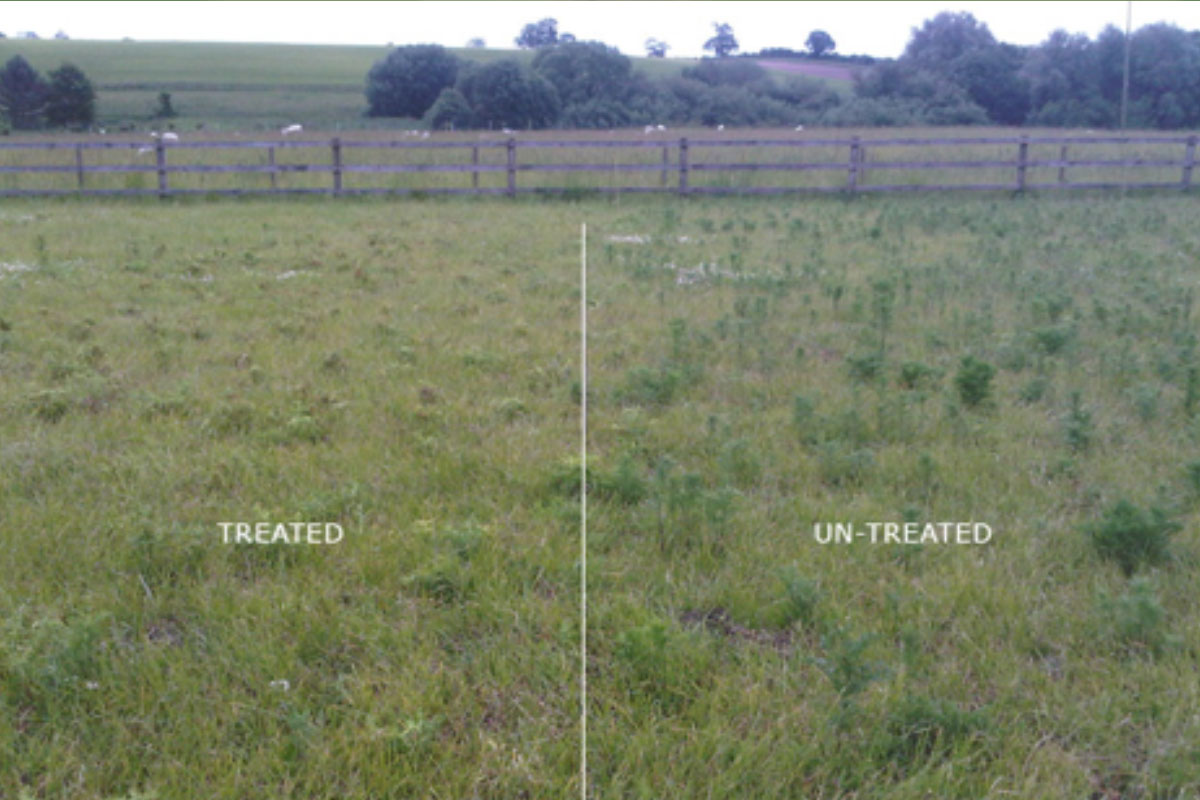Chemspec provide advice on grassland and paddock maintenance in and around the Norfolk area and with the ever increasing price of bought in animal feeds getting the most from your grass should be a high priority.
From re-seeding, weed control, fertilisation and annual management Chemspec can advise on strategies to get the most out of your grass, whether you’re looking to achieve high yields of silage, hay or a good bite for the pony. Local contractors are used for chemical control of troublesome grassland weeds such as Ragwort, Thistles, Docks and if required a tailored grass seed mix can be supplied to suit the requirement of establishing new grass leys.
Offering advice to control Ragwort is an annual conversation at Chemspec and its always nice to hear from a satisfied customer when his attempts to control the severe Ragwort infestation in his paddock really paid off.
Ragworts is a danger to all stock, but particularly horses, cattle, free range pigs and chickens. Sheep, goats and deer are more resistant, but their condition could be affected non-the-less. The Ragwort poisons are alkaloids which cause cirrhosis of the liver. There is no known antidote or preventative. Ragwort is poisonous fresh, but animals find it more attractive to eat when it is dead or dying because of the release of sugars so consequently contamination of hay or silage is also a danger. Ensiled Ragwort is very dangerous because it takes only a few plants to contaminate a clamp. Do not leave dead or dying ragwort plants around where animals might graze.
There are a number of weeds that may be found in grassland that are of varying toxicity to livestock. The most common one we are asked about is Ragwort but be aware of the following weeds that may also be present;
Horsetails / mare’s tails
Bracken
Creeping buttercup
Hemlock
Broom
Sheep sorrel
Yellow or flag iris
There are a number of methods available to control ragwort and whatever method you choose, persistence is the key as the weed will return quickly if left unmanaged. Ragwort can be dug out by cutting well below the growing crown of the plant. Manual pulling is not easily done as the crown can be left in the ground. New plants rapidly develop in poorer swards which are heavily grazed so trying to maintain a denser sward will assist in reducing Ragwort infestations.
If you are considering chemically controlling Ragwort be sure to take advice from a BASIS qualified agronomist. The phenoxy hormones 2,4-D and MCPA as Headland Polo offer the best control for Ragwort but this needs to be in a targeted programme applied at the rosette stage and again before stem extension in the following year. The picture below was taken in June 2012 and shows the effects of a 2,4-D based product on established Ragwort in a grass paddock, 7 days after application.

In this particular case the field had been cut 2 weeks prior to treatment because some of the Ragwort had got beyond the optimum growth stage for spraying , so by cutting this allowed sufficient young regrowth to occur. Some more pictures below show a close up of the symptoms that can be expected after treating Ragwort with similar chemistry to what has been used here.
 If you require more information on Ragwort control contact our office and we will be happy to advise you on the best course of control for your situation.
If you require more information on Ragwort control contact our office and we will be happy to advise you on the best course of control for your situation.